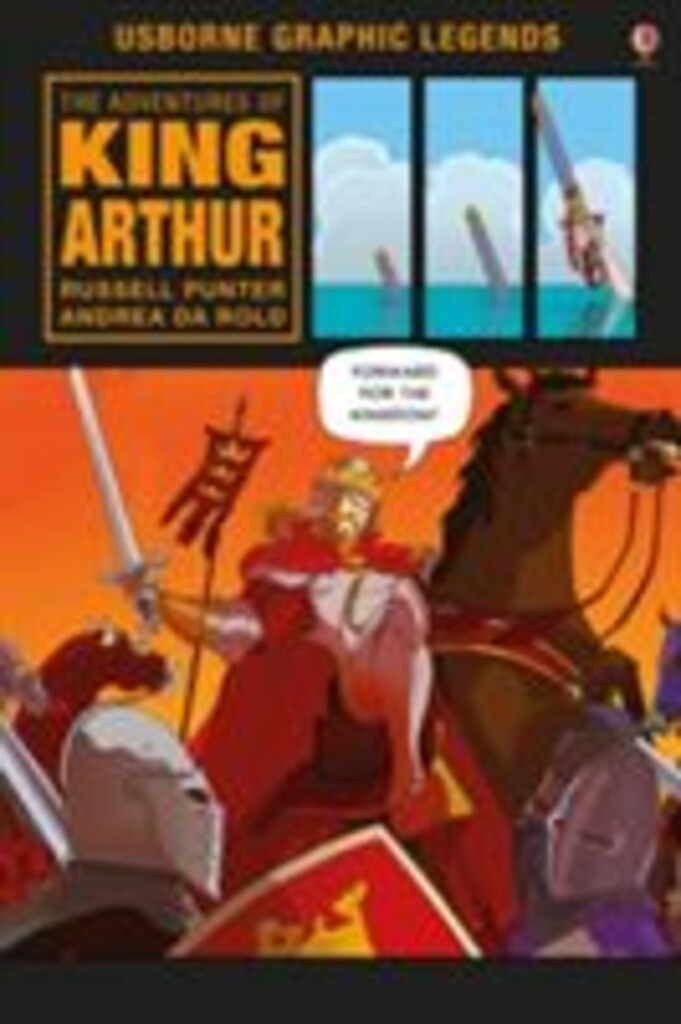
The adventures of King Arthur
Russell Punter
Bok · Engelsk · 2017 · Grafisk roman
| Medvirkende | |
|---|---|
| Utgitt | London : Usborne , 2017
|
| Omfang | 103 s. : kol. ill.
|
| Passer for | |
| Opplysninger | Alder: 11-16 år
|
| Emner | Arthur , britannisk sagnkonge
|
| Sjanger | |
| Geografisk emneord | |
| ISBN | 978-1-4749-2202-9 : Nkr 135.00
|
| Hylleplass | Tq 82 P
|
- Flå folkebibliotek har 0 av 0 ledig (Oppdaterer)
- Fyresdal folkebibliotek har 0 av 0 ledig (Oppdaterer)
- Gol bibliotek har 0 av 0 ledig (Oppdaterer)
- Hemsedal folkebibliotek har 0 av 0 ledig (Oppdaterer)
- Hol folkebibliotek: Geilo hovedbibliotek har 0 av 0 ledig (Oppdaterer)
- Hol folkebibliotek: Hol filial har 0 av 0 ledig (Oppdaterer)
- Hol folkebibliotek: Hovet filial har 0 av 0 ledig (Oppdaterer)
- Hå bibliotek: Hovudbiblioteket har 0 av 0 ledig (Oppdaterer)
- Kviteseid Folkebibliotek har 0 av 0 ledig (Oppdaterer)
- Nesbyen bibliotek Embetsgarden har 0 av 0 ledig (Oppdaterer)
- Nissedal folkebibliotek har 0 av 0 ledig (Oppdaterer)
- Seljord bibliotek: Hovudbiblioteket har 0 av 0 ledig (Oppdaterer)
- Sveio folkebibliotek: Hovudbiblioteket har 0 av 0 ledig (Oppdaterer)
- Tokke bibliotek: Hovudbiblioteket Dalen har 0 av 0 ledig (Oppdaterer)
- Vinje folkebibliotek: Edland avdeling har 0 av 0 ledig (Oppdaterer)
- Vinje folkebibliotek: Rauland avdeling har 0 av 0 ledig (Oppdaterer)
- Vinje folkebibliotek: Åmot avdeling har 0 av 0 ledig (Oppdaterer)
- Ål bibliotek har 0 av 0 ledig (Oppdaterer)